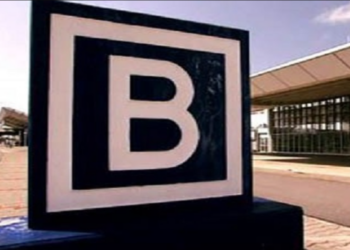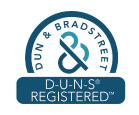When Sam Walton said “Control your expenses better than your competition. This is where you can always find the competitive advantage,” it appears the management of Julius Berger took note. The company released its 2020 result a few weeks ago. Expectedly, the group revenue dropped from N266.43 billion to N241.77 billion – a drop of 9.3%. However, the profit only dipped marginally (3.6%) from N7.55 billion to N7.28 billion.
Coming from a Covid-19 ravaged financial year, this is a triumph in itself.
Profitability
The impact of Covid 19 can be seen in their returns. The return on Asset (ROA) reduced marginally from 2.4% in 2019 to 2.2% in 2020, while the return on Equity (ROE) and return on investment (ROI) suffered a similar decline from 2.2% to 2.4% and from 1.74% to 1.62% respectively.
READ: Seplat gains 21% in one month as investors take advantage of dual listing to repatriate forex
| 2020 | 2019 | |
| Return on Asset (ROA) | 2.2% | 2.4% |
| Return on Equity (ROE) | 2.2% | 2.4% |
| Return on Investment (ROI) | 1.62% | 1.74% |
| EPS (Basic) | 5.72 | 4.60 |
| EPS(Diluted) | 4.72 | 4.55 |
Overall, the returns were not great, but they could easily have been worse. The company did a number of things right to deflect part of the shock that emanated from the pandemic.
Firstly, they reduced their administrative expenses from N37.03 billion in 2019 to N34.51 billion in 2020. This represents a cost reduction of N2.52 billion (6.8%).
READ: Export: One-State-One-Product initiative will achieve $30 billion non-oil exports by 2025 – NEPC
Secondly, the group recovered some impairment losses hitherto written off. The amount of impairment loss on trade and tax receivables dropped from N2.96 billion to N0.96 billion, a recovery of N2 billion. Of this amount, the biggest part came from the recovery in trade receivables. The amount recovered in 2020, was N1.57 billion from N0.48 billion in 2019. The trade receivables impairment simply refers to jobs done that have not, and are unlikely to be paid for (a sort of bad debt).
To have achieved this level of recovery shows that their trade receivables management and credit recovery effort is working. To buttress this, the Group stated that:
“…In determining the recoverability of trade receivables, the group considers changes in credit quality of trade receivables from the date credit was initially granted up to the end of the reporting period with emphasis on a certificate-by-certificate basis.”
READ: GDP: Shrinking consumer wallet could have contributed to slower telecoms growth
In that statement, the keywords are ‘changes in credit quality.’
All the more remarkable is that the financial report was prepared with the application of IFRS 9 (financial instruments) dealing with expected credit losses and IAS 36 (Impairment of non-financial assets), which require stress testing of the trade receivables in light of the covid19 impact on receivables. It is easily conceivable, that even more could be recovered in the next financial year as many of the trade receivables are tied to government-related construction works. This is one of the few upsides of their business concentration with the government. This should be watched closely in the next set of financial report.
Thirdly, is the way they have been able to reduce their financial cost while growing their loan stock. In 2019, the Group increased its bank overdraft from N6.21 billion in 2019 to N19.3 billion in 2020, yet the overall financial cost reduced from N7.0 billion in 2019 to N3.72 billion in 2020.
Concentration Risk
If there is a concern for investors, it has to be the concentration risk. There are 3 revenue drivers namely – civil works, building works and service rendering.
While building works and service rendering suffered various degrees of losses, civil works remarkably experienced growth in its revenue from N151 billion to N182 billion – a whopping N31 billion increase (20.53% growth). This proves the resilient nature of the Group’s civil works income stream and business.
The same cannot be said of their building works which suffered a sharp drop from N90.59 billion to N37.77 billion representing a decline of 58.3%. Service rendering also reduced by a moderate 8.8% from N23.98 billion to N21.86 billion.
In the year 2020, Julius Berger’s revenue concentration risk reached a new level with civil works producing over 75% of the Group’s revenue from 57% in the previous year. Majority of the company’s projects and revenues are from government business. In 2019, 83.7% came from the government and this improved marginally to 82% in 2020. To further put it into perspective – of the entire 2020 revenue, only 3 transactions from the government amounted to N176.1 billion out of N241.7 billion (72.9 %) generated by the company.
Growing receivables
With extensive transaction with the Nigerian government, it is only natural that the biggest chunk of their debtors would be the government.
The size of the receivable grew significantly (14.5%). In 2020, the receivable was N135.8 billion from N64.8 billion in 2019. These are receivables with 1 – 3 years maturity. The credit policy can be further fine-tuned to enhance the company’s liquidity and reduce the need for overdraft.
In conclusion, these are not the best of financial reports but there are mitigating circumstances. Julius Berger’s resourcefulness helped them weather the 2020 storm by plugging some of their leakages.
This shows their resilience, and apparently, this resilience isn’t a fluke as a review of their Q1 2021 result shows that the revenue grew from N55.9 billion in Q1 2020 to N71.2 billion in Q1 2021 reflecting a 27% improvement. The profit also improved from N1.05 billion in Q1 2020 to N3.45 billion in Q1 2021.
This impressive performance dovetails to the Profit after Tax (PAT) and Earning per Share (EPS) improving from N1.05 billion to N3.45 billion and 0.72 to 1.52 respectively when Q1 2021 is compared to Q1 2020.
With this set of financials, it is safe to say that Julius Berger has weathered the storm successfully.






















Nice